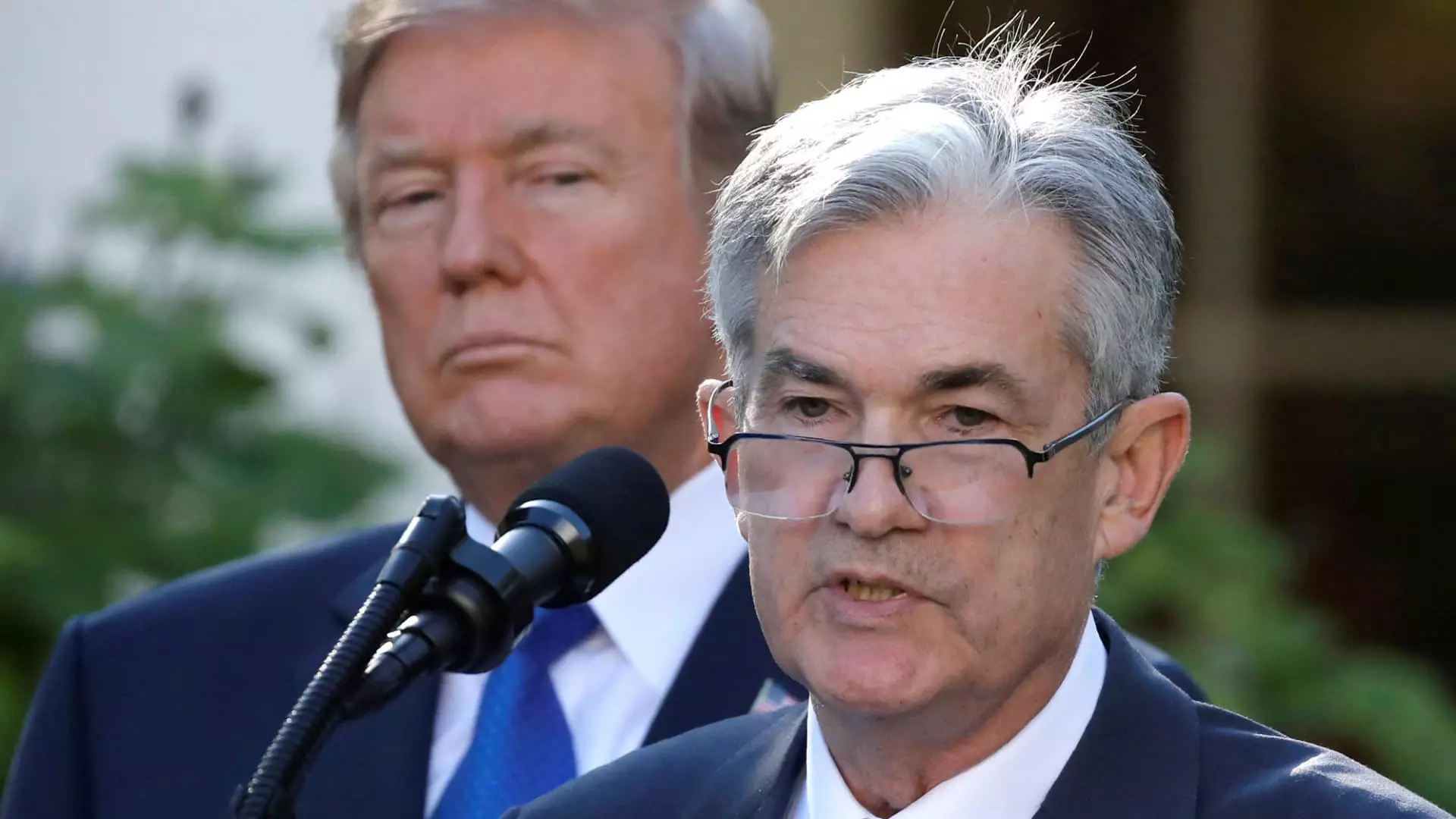As political pressures intensify, Jerome Powell, the Chair of the Federal Reserve, finds himself in a fray that strains the very fabric of the U.S. economy. Recent comments from former President Donald Trump highlight concerns about the higher federal funds rate, which many argue stymies business growth and consumer borrowing. Amidst this criticism, expectations from market futures indicate that interest rates will likely remain unchanged following the Fed’s upcoming two-day meeting. This indicates not just Powell’s current standing but also poses broader questions about his leadership during challenging economic times.
The actions of the Federal Reserve have far-reaching implications, influencing everything from mortgage rates to credit card interest charges. When politicians weigh in on policy, it adds another layer of complexity to the already intricate dance of fiscal management. This begs a pressing question: Should the Federal Reserve be influenced by political winds, or should it maintain its independence to make difficult but necessary economic decisions? For a country that values checks and balances, the intersection of politics and monetary policy can often resemble a pressure cooker—an environment ripe for error.
Consumers Caught in the Economic Crossfire
The ramifications of the Fed’s steady interest rates are palpable for the average American, at a time when inflation remains stubborn and consumer debt is climbing. Matt Schulz, chief credit analyst at LendingTree, effectively summarizes the plight of many: “With high interest rates, stubborn inflation, and economic uncertainty, people are feeling cornered.” Such feelings are not abstract; they manifest in the form of rising credit card interest rates, hovering at an alarming average of over 20%. This situation places significant burdens on consumers already grappling with the relentless pressure of high prices.
Interestingly, while rates stay high, there’s an overlooked silver lining for borrowers with strong credit. Schulz suggests that consumers have more agency over their financial landscapes than they believe. Practices such as shifting to zero-interest balance transfer credit cards or consolidating high-interest debt can unlock a path to financial relief, despite the overarching gloom. This is a crucial insight during an era when many feel powerless and trapped by the economy. It amplifies the urgent need for awareness and action—a call for individuals not merely to accept circumstances, but to reclaim their economic agency.
The Struggle in Housing Markets
In addition to credit card burdens, the housing market presents another daunting challenge. The mortgage landscape is stagnant, with 30-year fixed rates remaining stubbornly trapped around 6.9%. Potential homebuyers hoping for a reprieve are met with limited inventory and affordability challenges exacerbated by the Fed’s decisions. The impact on consumer sentiment is palpable, creating a landscape where many feel excluded from the dream of homeownership.
Moreover, economic strides made during recent years cannot overshadow the disillusionment many face while navigating this labyrinthine market. For hopeful buyers, the message is stark: anticipate continued high rates, and prepare for a prolonged struggle, which may require deeper financial sacrifices. The sadness in this situation lies not only in consumer finances but in the realization that many may be pushed out of the market altogether, thwarting generational wealth-building opportunities.
Rising Auto Loan and Student Debt Concerns
Automobile loans represent yet another facet of this intertwined financial crisis. With average rates for a five-year new car loan hovering around 7.24%, coupled with the reality that many buyers are paying over $1,000 a month for their car payments, the nexus of affordability and financial distress looms larger than ever. As car prices soar, largely influenced by trade policy shifts, the dream of owning a reliable vehicle slips further from reach for many.
In parallel, federal student loan borrowers face a slew of complications. While new loans are somewhat insulated from fluctuations thanks to their fixed rates, existing borrowers still grapple with looming economic pressures without significant pathway toward relief, such as loan forgiveness. The focus on education—widely regarded as a pathway to opportunity—has become entangled in rising costs and uncertain futures, stripping away the aspirational narratives surrounding higher education funding.
Savers and Economic Equity
Meanwhile, as interest rates holding steady benefits the savers, primarily retirees seeking stability through high-yield savings accounts, it adds a twist to the narrative. Currently, online savings accounts are providing yields exceeding 4%, thanks in part to the Fed’s monetary strategy. This is a double-edged sword as millions of Americans benefit from it, while many others remain trapped in a cycle of debt, struggling to get ahead.
This divergence highlights thorny issues surrounding wealth inequality in America. The affluent have avenues to capitalize on interest rates, while those burdened by debt find themselves sinking deeper. Economic policies and decisions made at the top resonate differently across the socio-economic spectrum. As such, the consequences of Powell’s leadership seem to stretch beyond mere financial indicators, funneling into the very essence of American equity and opportunity.
The mounting pressure on Powell is not simply about the numbers but about people—everyday lives impacted by policy decisions that oscillate between economic theory and political pragmatism. Hence, the question lingers: Will Powell rise to the occasion, navigating both political pressures and economic realities in a manner that serves the broader population, or will he remain ensnared by a system that prioritizes stability over the needs of the many?

